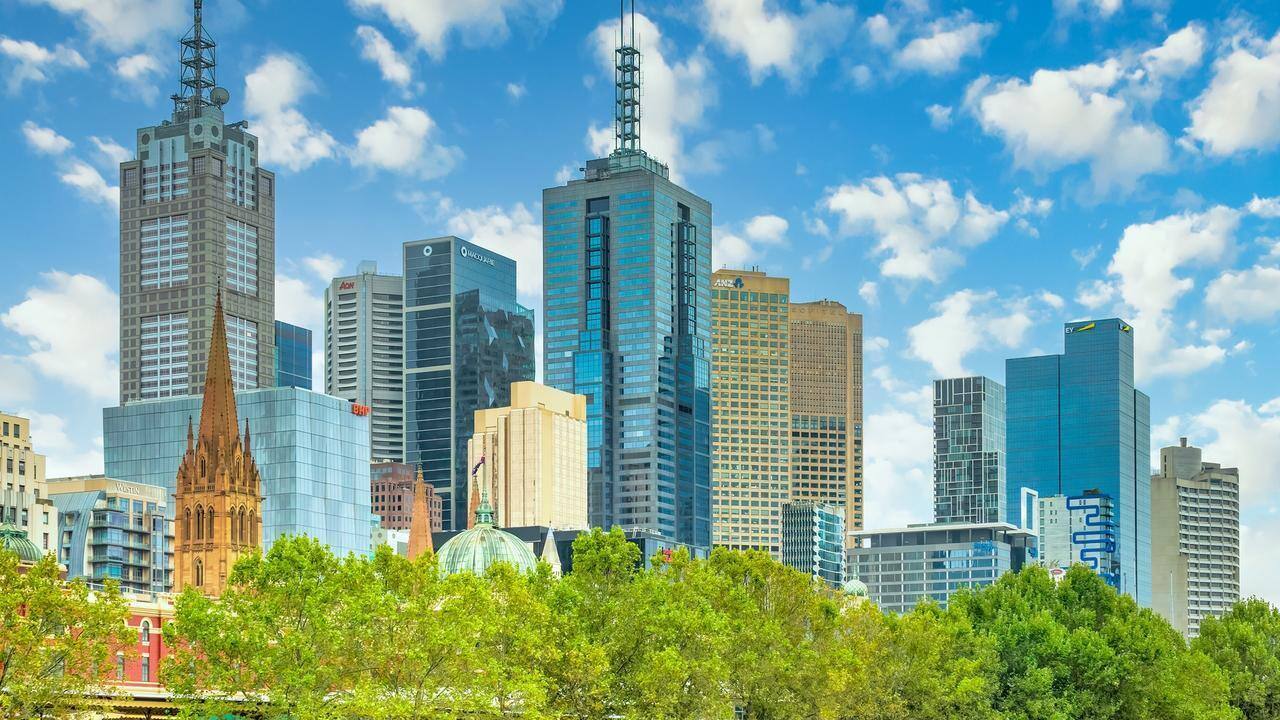
KEY POINTS
- Property prices have surged 32.5% since the onset of the COVID-19 pandemic, adding an extra $188,000 in value to a median Australian home
- Rental price growth has also surged 32.4% since March 2020, with the median rent now about $150 per week higher
- The shrinking size of Australian households, record inward migration after borders reopened, and problems in the building industry stemming back to COVID-19 stimulus programs and pandemic supply chain shocks, have also put more pressure on the housing supply, driving up prices
It’s now been four years since the WHO declared COVID-19 a worldwide pandemic.
The experience of living through lockdowns, social isolation, and mass vaccination campaigns has had far-reaching effects on society, with pandemic phenomena like remote working now entrenched in many companies and institutions.
COVID-19 also had a major impact on Australia’s housing market and upended a lot of conventional thinking about how and why home prices rise and fall.
CoreLogic has just published a research paper looking back at some of these developments in property, and whether what it calls the pandemic “roller coaster ride” is likely to be repeated anytime soon.
Home prices
The most obvious change in housing since COVID-19 appeared has been the extraordinary lift in home prices.
According to CoreLogic’s Home Value Index, prices in Australia have surged 32.5% since the onset of COVID-19, adding approximately $188,000 to the median value of a home.
As a comparison, average wages have grown at around a third of that figure over the same period.
However, it hasn’t been a case of a straight rise since March 2020.
In fact, home prices have twice gone backwards - it’s just that the growth has been so strong, that it’s more than wiped out any losses.

Home values initially fell by 1.7% between March 2020 and June 2020, before surging 30.8% higher, fuelled by record low interest rates.
Then, from April 2022, the market slumped 7.5% as interest rates rose from their emergency lows.
The astonishing thing is that while interest rates kept being pushed up and up by the Reserve Bank of Australia, the housing market did a U-turn and began rising again from February 2023, with renewed demand being fuelled by the low number of homes for sale coming onto the market and high overseas migration.
At the end of February 2024, home values were 9.5% higher than a year before.
But it hasn’t been an even picture of growth across the country.
At one end are markets like Adelaide, Regional South Australia, Perth, Regional WA, Brisbane, and Regional Queensland, which have all experienced more than 50% growth in home values since March 2020.
At the other end of the spectrum is Melbourne, where values are up by just 11.0%.
“The subdued performance across Melbourne can be attributed to more frequent lockdowns through the pandemic alongside weak demographic trends,” according to CoreLogic’s Research Director, Tim Lawless.
An increasingly tight rental market

One of the surprising things during the pandemic was the way rental vacancy rates trended sharply lower, even though borders were initially closed and thousands of students and temporary migrants left the country.
“Such a severe tightening in rental supply can be attributed to a combination of smaller households that amplified rental demand, followed by a surge in net overseas migration once international borders reopened,” according to Mr Lawless.
Not surprisingly, this demand has seen rents surge by almost a third across the country since the onset of the pandemic (+32.4%), with the median rent now about $150 per week higher.
It’s worth contrasting that with the previous four years, which saw national rents rise by only 4.6%.
Interest rates
Initially, monetary policy (in the form of emergency-low interest rates) played a key role in both stimulating housing demand, but then temporarily dampening activity, as interest rates were hiked by the Reserve Bank from May 2022 in a bid to combat spiralling inflation.
CoreLogic notes a record portion of borrowers took advantage of low fixed mortgage rates in 2022, fueling speculation of a ‘fixed rate cliff’ as the wave of fixed rate lending terms expired.
But the forecaster notes that “so far borrowers have navigated higher mortgage rates much better than expected, with mortgage arrears holding below pre-pandemic levels.”
Indeed, it seems a lack of housing supply, a ridiculously tight rental market and cashed-up buyers not requiring finance have helped drive home prices up, even in the face of high interest rates and a per-capita recession.
Demographics
Another interesting factor of the pandemic experience was the way it accelerated demographic trends.
Demand for housing remained strong despite closed borders because of the formation of smaller households.
The average Australian household size fell from 2.55 people in late 2020 to a historic low of 2.48 people in August 2022.
“Although the reduction in average household size may not seem significant when applied across the population, smaller households are estimated to have added approximately 120,000 households to overall housing demand,” Tim Lawless says.
CoreLogic says internal migration patterns also tended to favour regional Australia through the first two years of the pandemic, while re-opened international borders have seen overseas migration spike to record highs.
Although population growth is now slowing, Tim Lawless says “Net overseas migration looks set to remain above pre-COVID levels over the coming years, placing further pressure on housing demand.”
Constrained supply
The pandemic and other global developments like the war in Ukraine have also helped create a range of challenges for builders.
CoreLogic says government pandemic stimulus programs like “HomeBuilder” actually overheated the residential construction sector, “creating supply side issues for land, materials and labour”.
Also, an unprecedented jump in construction costs “created significant liquidity pressures for the residential construction sector, eroding profitability and sending many builders into administration.”
The time it takes to build a new home has also blown out, from a pre-pandemic average of 2.2 quarters to deliver a completed house to 3.1 quarters, with larger increases for much-needed higher-density dwellings like apartment blocks.

Going forward...
So, are we likely to see such a period of turmoil in the housing market again, where supply constraints and a whole array of unexpected factors have created huge demand pressures, pushing home values and rents up so sharply in such a short space of time?
Unless there’s another event like a global pandemic, the answer is probably “no”.
“It’s virtually an unprecedented growth over this period, and it’s a reminder of the underlying fundamentals in a market where supply and demand were significantly out of kilter,” Tim Lawless says.
AMP’s Chief Economist Shane Oliver puts it like this:
“So the more likely scenario is that we continue to see gradual price gains,” he told the Financial Review, “when interest rates start coming down again, we might see another cyclical upswing that’s more limited in an environment of higher interest rates than we saw before the pandemic.”
The verdict?
A less wild roller-coaster ride from here.
Stay Up to Date
with the Latest Australian Property News, Insights & Education.




.png?width=292&height=292&name=Copy%20Link%20(1).png)
 SIGN UP FOR FREE NEWSLETTER
SIGN UP FOR FREE NEWSLETTER








.jpg?width=1920&height=1080&name=Warning%2c%20You%20Might%20Be%20Facing%20Higher%20Taxes%20Soon%20(1).jpg)





.png?width=1920&height=1080&name=Rate%20Drops%20Signal%20BIGGEST%20Property%20Boom%20in%20DECADES%20(1).png)

.jpg?width=1920&height=1080&name=Labor%20vs%20Liberal%20These%20Housing%20Policies%20Could%20Change%20the%20Property%20Market%20Forever%20(1).jpg)
.jpg?width=1920&height=1080&name=QLD%20Slashes%20Stamp%20Duty%20Big%20News%20for%20Investors%20%26%20Home%20Buyers%20(1).jpg)
.jpg?width=1920&height=1080&name=Trump%20Just%20Slapped%20Tariffs%20%E2%80%93%20Here%E2%80%99s%20What%20It%20Means%20for%20Australia%20(1).jpg)
.jpg?width=1920&height=1080&name=Federal%20Budget%202025%20More%20Debt%2c%20No%20Housing%20%E2%80%93%20Here%E2%80%99s%20What%20You%20Need%20to%20Know%20(1).jpg)
.jpg?width=1920&height=1080&name=Australias%20Housing%20Crisis%20is%20about%20to%20get%20MUCH%20Worse%20(New%20Data%20Warns).jpg)
%20(1).jpg?width=1920&height=1080&name=Australias%20RENTAL%20CRISIS%20Hits%20ROCK%20BOTTOM!%20(2025%20Update)%20(1).jpg)
%20(1).png?width=1920&height=1080&name=Is%20Adelaide%20Still%20a%20Good%20Property%20Investment%20(2025%20UPDATE)%20(1).png)
.jpg?width=1920&height=1080&name=RBA%20Shocks%20with%20Rate%20Cuts!%20What%E2%80%99s%20Next%20for%20Property%20Investors%20(1).jpg)
%20(1).jpg?width=1920&height=1080&name=I%20Predict%20The%20Feb%20Rate%20Cut%20(My%20Price%20Growth%20Prediction)%20(1).jpg)
.png?width=1920&height=1080&name=Why%20Property%20Prices%20Will%20Rise%20in%202025%20Market%20Predictions%20(1).png)
.jpg?width=1920&height=1080&name=Why%20Investors%20Are%20Choosing%20Apartments%20Over%20Houses%202%20(1).jpg)
.jpg?width=1920&height=1080&name=Why%20Rate%20Cuts%20Will%20Trigger%20A%20Property%20Boom%20(1).jpg)
.jpg?width=1920&height=1080&name=Retire%20On%202Million%20With%20One%20Property%20(Using%20SMSF).jpg)
.jpg?width=1920&height=1080&name=4%20Reasons%20Why%20You%20Should%20Invest%20in%20Melbourne%20Now%20(1).jpg)
%20(1).jpg?width=1920&height=1080&name=Old%20Property%20vs%20New%20Property%20(Facts%20and%20Figures%20Revealed)%20(1).jpg)
%20(1).jpg?width=1920&height=1080&name=Will%20The%20New%20QLD%20Govt%20Create%20a%20Property%20Boom%20or%20Bust%20(My%20Prediction)%20(1).jpg)
%20Scott%20Kuru%20(1).jpg?width=1920&height=1080&name=Inflation%20Hits%20Three-Year%20Low%20(Will%20RBA%20Cut%20Rates%20Soon)%20Scott%20Kuru%20(1).jpg)
.jpg?width=1920&height=1080&name=How%20to%20Buy%20Investment%20Property%20Through%20SMSF_%20The%20Ultimate%20Guide%20(1).jpg)
.jpg?width=1920&height=1080&name=Victoria%20Slashes%20Stamp%20Duty%20Melbourne%20Set%20to%20Boom%20Scott%20Kuru%20(1).jpg)
.png?width=1571&height=861&name=Are%20Foreign%20Buyers%20Really%20Driving%20Up%20Australian%20Property%20Prices%20(1).png)
.jpg?width=1920&height=1080&name=The%20Single%20Factor%20That%20Predicts%20Property%20Growth%20Regions%20(1).jpg)
%20Scott%20Kuru%20(1).jpg?width=1920&height=1080&name=My%20Prediction%20On%20Rates%20%26%20Negative%20Gearing%20(Market%20Crash)%20Scott%20Kuru%20(1).jpg)

-1.png?width=1920&height=1080&name=Major%20Banks%20Cut%20Rates%20Will%20RBA%20Follow%20Suit%20(Sept%20Rate%20Update)-1.png)
%20Scott%20Kuru-1.png?width=1920&height=1080&name=Rate%20Cut%20Coming%20What%20New%20Zealands%20Move%20Means%20for%20Australia%20(Sept%20Prediction)%20Scott%20Kuru-1.png)
%20(1).jpg?width=1920&height=1080&name=Buy%20when%20the%20interest%20rates%20are%20high!%20(Why%20you%20must%20buy%20now!)%20(1).jpg)
.jpg?width=1920&height=1080&name=Carms_Revised%20Taxes%20Due%20Aug%209%20YT%20Thumbnail02%20(1).jpg)
.jpg?width=1920&height=1080&name=Carms_Too%20Little%20Too%20Late%20Aug%207%20YT%20Thumbnail01%20(1).jpg)









.jpg?width=1920&height=1080&name=Carms_Rate%20Drop%20In%20July%20Jun%2010%20YT%20Thumbnail02%20(1).jpg)
.jpg?width=1920&height=1080&name=Carms_Own%20a%20Property%20V6%20Jun%205_YT%20Thumbnail%20(1).jpg)









.png?width=1920&height=1080&name=Artboard%201%20(3).png)






.jpg?width=1920&height=1080&name=YT%20thumbnail%20%20(1).jpg)

